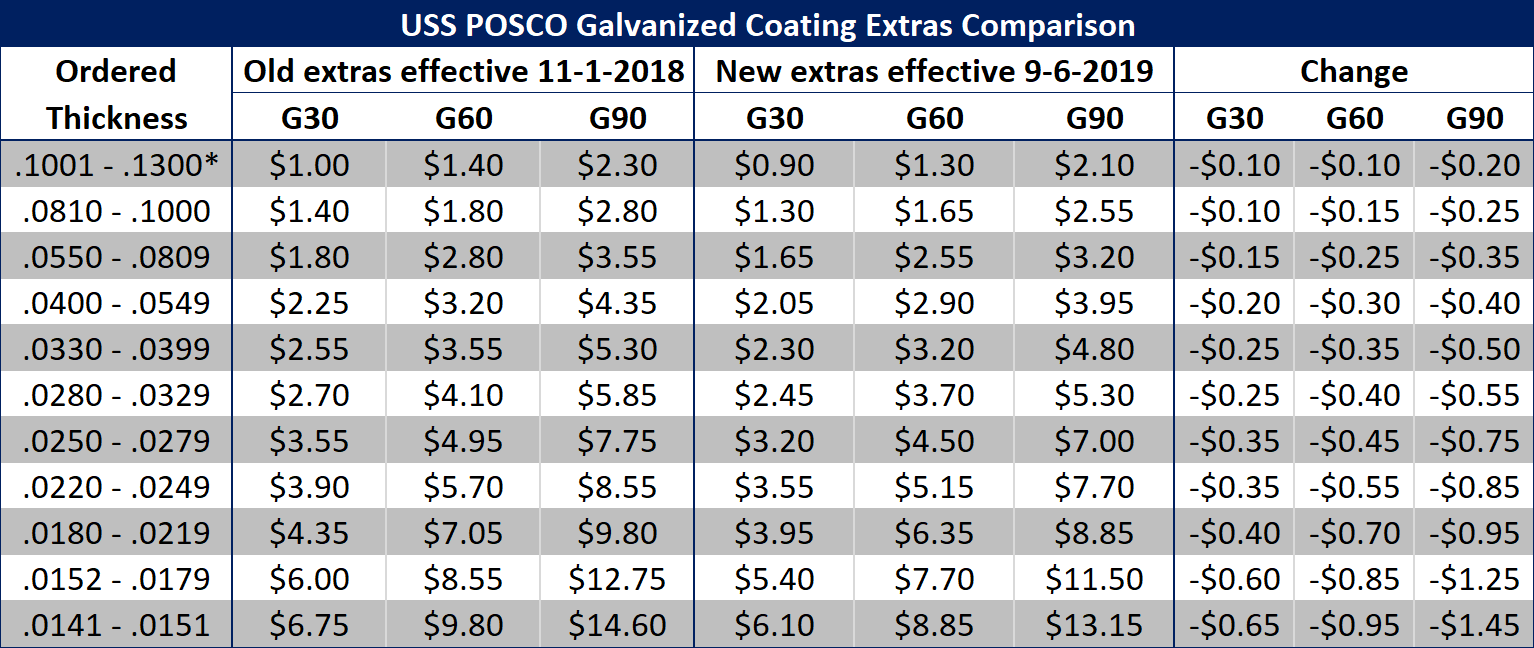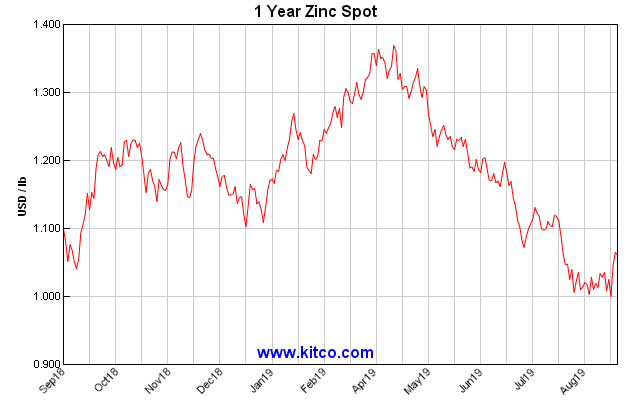Prices

September 8, 2019
UPI Adjusts Galvanized Coating Extras
Written by Brett Linton
On Friday, Sept. 6, USS-POSCO Industries advised customers: “USS-POSCO Industries (UPI) has revised the published Galvanized coating extras. The new extras will apply on all new orders effective immediately. The new price book for the extras can be found on the attachment as well as on our website. Please contact your UPI Sales Representative with any questions. Thank you for your continued support of USS-POSCO Industries.”
SMU has done an analysis on the old and new UPI galvanized extras, provided below.

Zinc prices have consecutively declined since spring when they peaked at $1.3695 per pound in April. The current price for zinc is about $1.0606 per pound.








